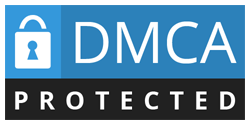In real estate financing, a Mortgage Deed is a critical document. It outlines the terms and conditions of a mortgage loan. Understanding the essential elements of a mortgage deed is crucial for both borrowers and lenders. The deed delineates their rights, obligations, and legal protections. It also shows the protections afforded by the mortgage agreement.
In this blog, we’ll explore the elements of a mortgage deed. We’ll highlight its essential elements and role in property financing. Professionals in the mortgage industry, such as those pursuing a CeMAP qualification, need a thorough understanding of mortgage deeds. This understanding is essential for providing comprehensive advice to clients. It also ensures regulatory compliance.
Table of Contents
- What Is a Mortgage Deed?
- Key Components of a Mortgage Deed
- Protections Offered by a Mortgage
- Relevance of Mortgage Deeds in CeMAP
- Conclusion

What Is a Mortgage Deed?
A mortgage deed outlines the terms and conditions of the mortgage agreement. It is between the borrower (mortgagor) and the lender (mortgagee). It is a legal document that works as proof of a mortgage loan. The mortgage deed outlines both parties’ rights and responsibilities. It also explains the legal safeguards and remedies available in case of default.
Essential Elements of a Mortgage Deed
Parties’ Identification:
The mortgagee (lender) and mortgagor (borrower) take the first positions in the mortgage deed. A legal description of the property being mortgaged is also included.
Loan Amount and Terms:
The mortgage deed details the loan’s principal amount, interest rate, and repayment plan. It also includes other terms and conditions. The mortgage agreement’s financial terms are described in this section.
Conveyance Clause:
If the borrower defaults, the conveyance clause establishes the circumstances. It shows when the lender may seize control of the property. It is an essential part of the mortgage deed. This section outlines the lender’s rights to sell the property during foreclosure. They sell to recoup the outstanding debt.
Agreements and Covenants:
The mortgage deed may include agreements and covenants. These specify the obligations of the lender and the borrower. These could consist of clauses on the upkeep of the property. They could also need insurance and other commitments from the parties.
Legal Descriptions:
The mortgage deed contains the property’s legal descriptions. These usually include the property’s address and borders. They may also have relevant land survey data.
Notarization and Signatures:
Lastly, the lender and the borrower must notarize and sign the mortgage deed. The deed must be signed to be enforceable. Notarization may sometimes be necessary to verify the authenticity of the signatures. It also guarantees the document’s legitimacy.
Also Check: 5 Best Property Dealing Tips And Tricks
Protections Offered by a Mortgage
Deed Property Rights:
The mortgage deed establishes the lender’s lien on the property. This serves as security for the loan. If the borrower fails the loan, the lender can foreclose on the property.
Legal Recourse:
The lender has the right to foreclose the property if the borrower doesn’t pay. This is to recoup the outstanding debt.
Protections for Borrowers:
The mortgage deed contains clauses that safeguard the borrower’s rights. For example, the borrower can repay the loan before foreclosure. Doing so redeems the property. The deed mainly protects the lender’s interests.
Clarity and Transparency:
The mortgage deed encourages clarity and transparency between the borrower and the lender. It puts the terms and conditions of the mortgage arrangement on paper. This lowers the possibility of misunderstandings or conflicts.
Also Check: Is A PHH Mortgage Right For Me?
Relevance of Mortgage Deeds in CeMAP
Professionals aiming to get the CeMAP certificate need to understand the fundamental components of a mortgage deed. They must do this to tell customers and guarantee regulatory compliance accurately. The content and ramifications of a mortgage deed are closely tied to the themes covered by CeMAP. These themes include mortgage regulation, products, and application procedures. CeMAP personnel can successfully help customers through the mortgage process. They ensure customers understand their rights and duties under the mortgage agreement. They do this by having a thorough grasp of mortgage deeds.
Also Check: How To Save Money On Utilities, Loans And More?
Conclusion
A mortgage deed outlines the terms and circumstances of a mortgage loan. It also details the rights and duties of the parties concerned. This document is essential in property finance. Both borrowers and lenders must comprehend the essential elements of a mortgage deed. This is to provide transparency and legal safeguards in real estate transactions. Mortgage industry professionals, such as those obtaining a CeMAP certification, need a deep understanding of mortgage deeds. This is necessary to ensure regulatory compliance and provide customers with complete guidance. People can confidently and competently navigate real estate finance. This happens by disclosing the elements and safeguards offered by mortgage deeds.
Also Check: 10 Essential Elements Of Small Business Invoices

